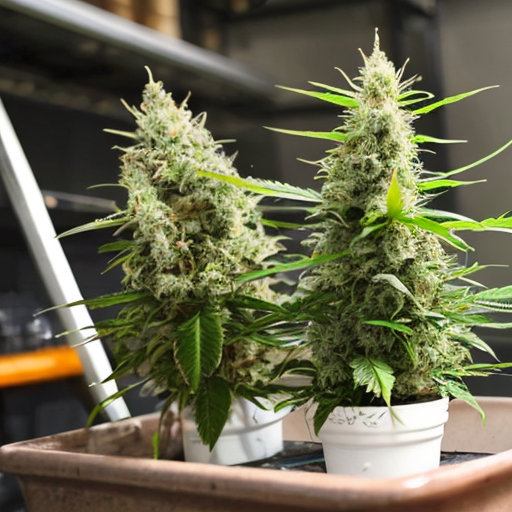In the diverse landscape of cannabis cultivation, one of the fundamental decisions growers face is selecting the most suitable growing medium for their plants.
From soil to hydroponics, each medium offers unique advantages and challenges that can impact plant health, yield, and overall cultivation experience.
Let’s embark on a journey through the garden as we explore the pros and cons of different growing mediums for cannabis.
Soil:
Pros:
- Natural Nutrient Source: Soil provides a rich, organic matrix that naturally contains essential nutrients for plant growth. This nutrient reservoir can sustain cannabis plants throughout their lifecycle, reducing the need for frequent fertilization.
- Microbial Life: Healthy soil is teeming with beneficial microbes that aid in nutrient uptake and protect against pathogens. These microorganisms contribute to soil structure and overall plant health, promoting robust growth and resistance to stress.
- Ease of Use: Soil-based cultivation methods are well-suited for novice growers due to their simplicity and forgiving nature. With proper soil preparation and regular watering, cannabis plants can thrive in a soil-based environment.
Cons:
- Potential for Pests and Disease: Soil can harbor pests, pathogens, and weed seeds that may adversely affect plant health. Without proper sanitation and pest management practices, growers may encounter issues such as root rot, fungus gnats, and nutrient deficiencies.
- Limited Control Over Nutrient Availability: While soil contains a natural reservoir of nutrients, growers have limited control over nutrient availability compared to hydroponic systems. Soil pH and nutrient levels can vary widely, requiring periodic testing and amendments to maintain optimal conditions.
Hydroponics:
Pros:
- Precise Nutrient Management: Hydroponic systems allow growers to precisely control nutrient concentrations, pH levels, and water quality, providing plants with optimal conditions for growth. This level of control can result in faster growth rates, increased yields, and improved nutrient uptake efficiency.
- Water Efficiency: Hydroponic systems use water more efficiently than soil-based cultivation methods, as water is recirculated within the system rather than being absorbed or lost through drainage. This can lead to significant water savings, especially in regions with limited water resources.
- Reduced Risk of Pests and Disease: Hydroponic systems eliminate the risk of soil-borne pests and diseases, as plants are grown in a soil-free environment. This reduces the need for pesticides and fungicides, promoting a cleaner and more sustainable cultivation practice.
Cons:
- Complexity: Hydroponic systems can be complex and require a greater initial investment in equipment and infrastructure compared to soil-based methods. Growers must also monitor and adjust nutrient levels and pH regularly to prevent nutrient imbalances and maintain plant health.
- Equipment Maintenance: Hydroponic systems require regular maintenance to ensure proper functioning of pumps, reservoirs, and nutrient delivery systems. Malfunctions or failures in equipment can quickly impact plant health and yield, requiring timely intervention and troubleshooting.
Coco Coir:
Pros:
- Excellent Water Retention and Aeration: Coco coir, derived from coconut husks, offers a balance of water retention and aeration ideal for cannabis cultivation. It retains moisture well while also providing adequate drainage and oxygenation to the roots, promoting healthy root development and nutrient uptake.
- Neutral pH: Coco coir has a naturally neutral pH, reducing the need for pH adjustments compared to other soilless mediums such as peat moss. This makes it an attractive option for growers seeking a low-maintenance growing medium with stable pH levels.
- Reusable and Sustainable: Coco coir is a renewable and sustainable alternative to peat moss, which is often harvested unsustainably. It can be reused multiple times with proper sterilization and preparation, making it an environmentally friendly choice for cannabis cultivation.
Cons:
- Limited Nutrient Buffering Capacity: Coco coir has a lower nutrient buffering capacity compared to soil, meaning it requires more frequent nutrient applications to maintain optimal nutrient levels. Growers must closely monitor nutrient concentrations and adjust feeding schedules accordingly to prevent nutrient deficiencies or toxicities.
- Potential for Salinity Buildup: Coco coir may accumulate salts over time, especially if irrigation water contains high levels of dissolved minerals. This can lead to nutrient imbalances and plant stress if not managed properly. Regular flushing with clean water and periodic leaching are necessary to prevent salt buildup and maintain plant health.
᠅᠅᠅
Choosing the right growing medium is a crucial decision for cannabis growers, as it can significantly impact plant growth, yield, and overall cultivation success.
Whether opting for soil, hydroponics, coco coir, or another medium, growers must carefully consider the pros and cons of each option and assess their specific needs, resources, and growing conditions.
By understanding the unique characteristics and requirements of different growing mediums, growers can cultivate healthy, vigorous cannabis plants and achieve optimal yields with confidence.
